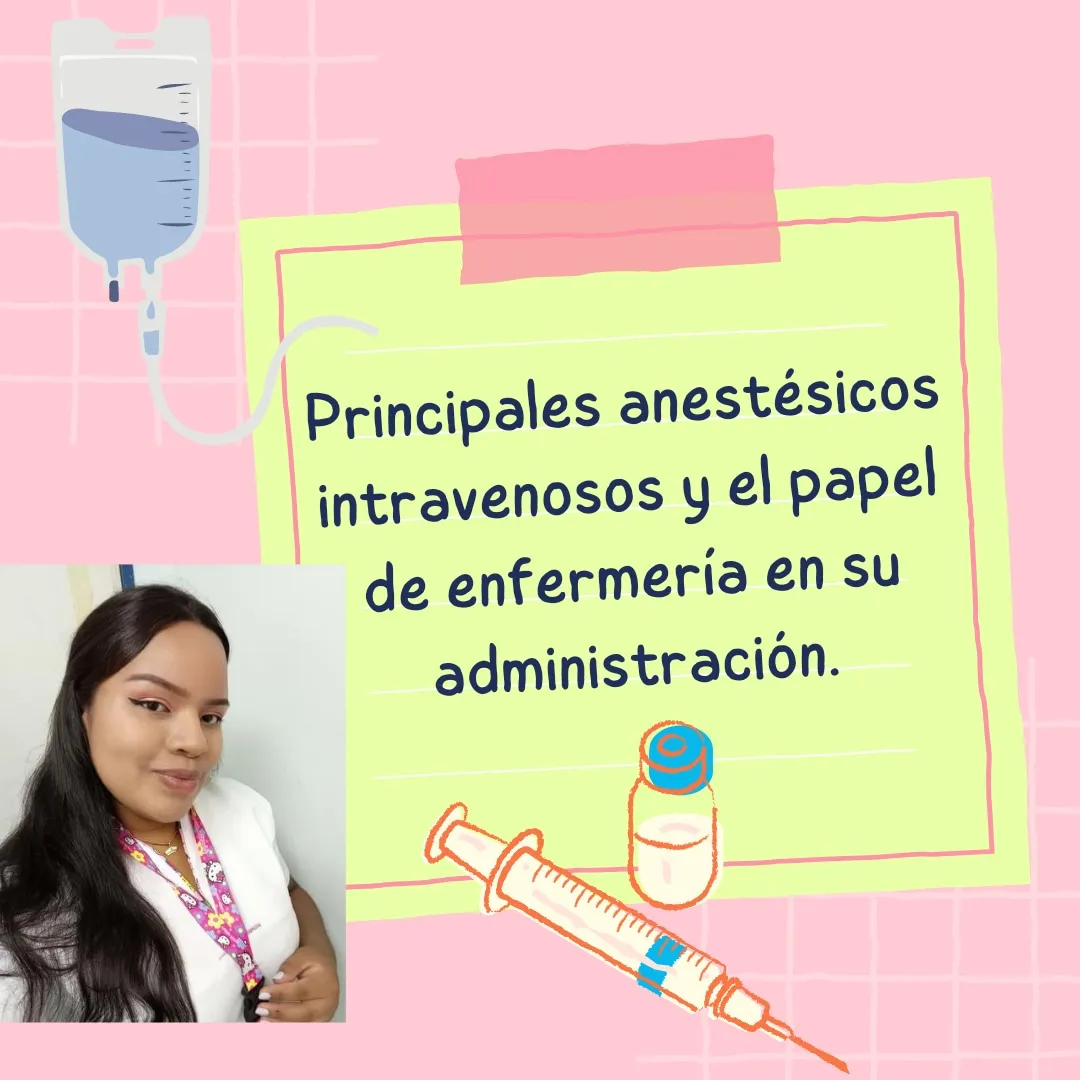
En la mayoría de las intervenciones quirúrgicas se realiza la administración de anestésicos que pueden ser tanto intravenosos cómo inhalados enfermería cumple un rol importante en la preparación del paciente al ingresar al quirófano así como también en la salida a recuperación.

Diseño creado en @Canva -Design created in @Canva.

La anestesia durante el acto quirúrgico es fundamental produce la hipnosis, sedación necesaria para el tiempo de intervención que se vaya a realizar sobre todo en aquellas que duran más de una hora, hay otras que no requieren de anestesia general puede ser local es decir en una sola porción del cuerpo.

Enfermería debe conocer el historial del paciente en cuanto a antecedentes de alergias al tipo de anestesia que se vaya a colocar así mismo patologías de base como enfermedades cardíacas, hepáticas y renales.

Dentro de los principales anestésicos intravenosos se encuentra el propofol, tiopental, midazolam por otra parte pueden ser administrados junto a otros fármacos que actúan a nivel del sistema nervioso central, las dosis son administradas por el anestesiólogo el papel de enfermería es brindar el mayor apoyo al médico durante el procedimiento como por ejemplo circular el material, administración de fármacos, oxígeno.

El personal de enfermería debe preservar la intimidad del paciente antes de la inducción de la anestesia, cateterizar una vía periférica de buen calibre preferiblemente con yelco número 18, vigilar signos de reacción adversas, monitorizar constantes vitales, estar atenta a posibles complicaciones para poder actuar junto al equipo de salud.

ENGLISH
In most surgical interventions, anesthetics are administered, which can be both intravenous and inhaled. Nursing plays an important role in preparing the patient when entering the operating room as well as when leaving for recovery.
Anesthesia during the surgical act is essential, it produces hypnosis, necessary sedation for the time of the intervention to be carried out, especially in those that last more than an hour, there are others that do not require general anesthesia, it can be local, that is, in a single portion of the body.
Nursing must know the patient's history in terms of allergies to the type of anesthesia that is going to be applied, as well as underlying pathologies such as heart, liver and kidney diseases.
Among the main intravenous anesthetics are propofol, thiopental, midazolam, on the other hand, they can be administered together with other drugs that act at the level of the central nervous system, the doses are administered by the anesthesiologist, the role of nursing is to provide the greatest support to the patient physician during the procedure such as circulating the material, drug administration, oxygen.
The nursing staff must preserve the privacy of the patient before induction of anesthesia, catheterize a good-calibre peripheral line, preferably with Yelco number 18, watch for signs of adverse reactions, monitor vital signs, be attentive to possible complications in order to act together. to the health team.

La información que acabas de leer es de mi aprendizaje en la carrera de T.S.U en enfermería. - The information you just read is from my learning in the career of T.S.U in nursing.
El separador e imágenes son de mi propiedad. - The separator and images are my property.
Traducción de: Google traductor - Translation of: Google translator.


Diseño creado en @Canva y @Bitmoji. -Design created in @Canva and @Bitmoji.

